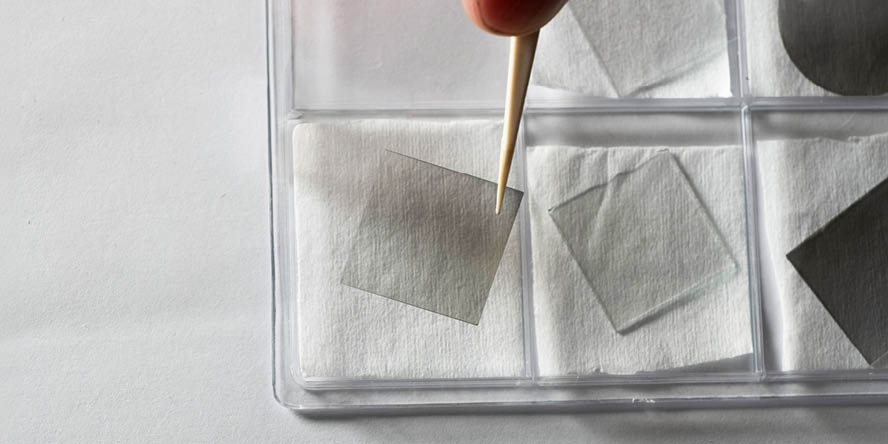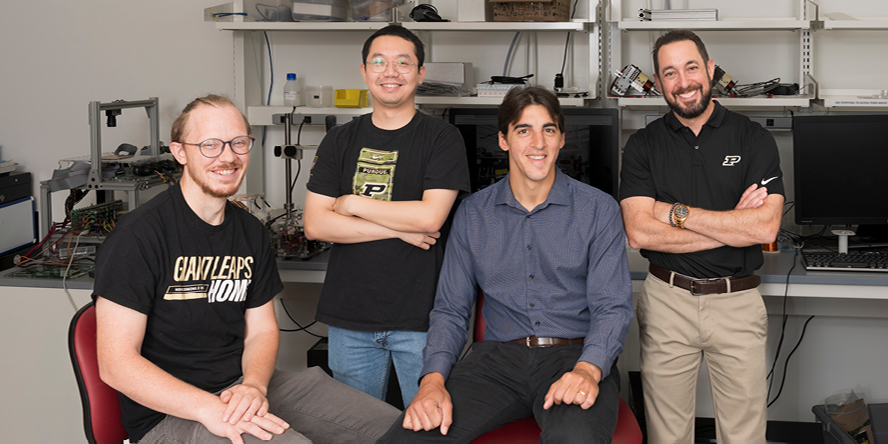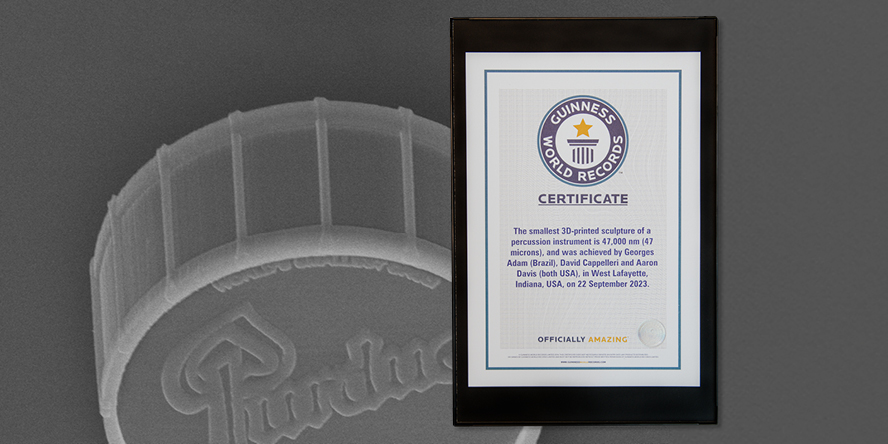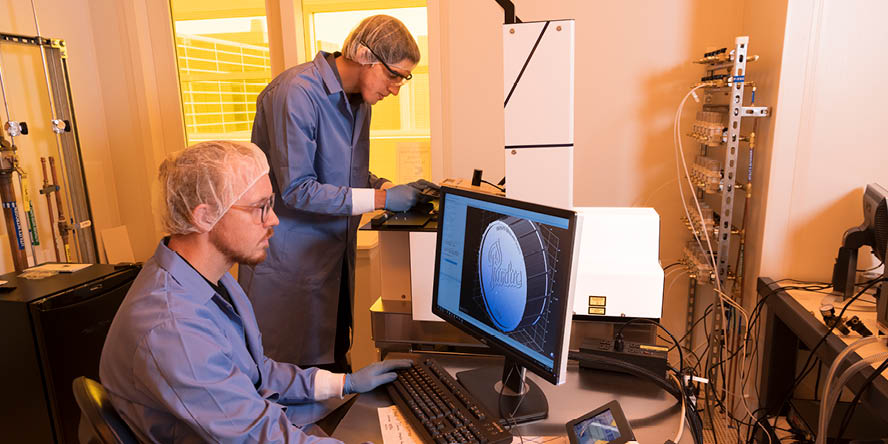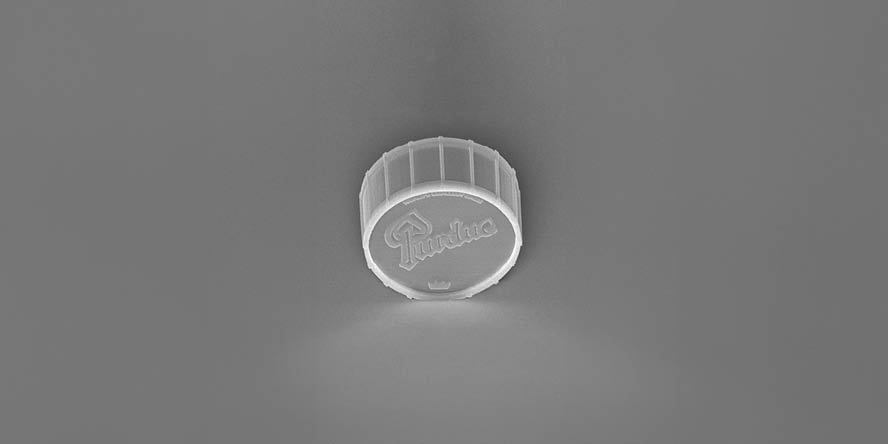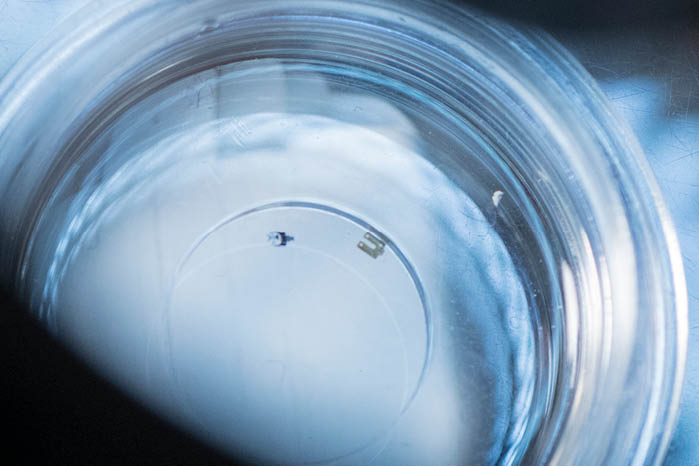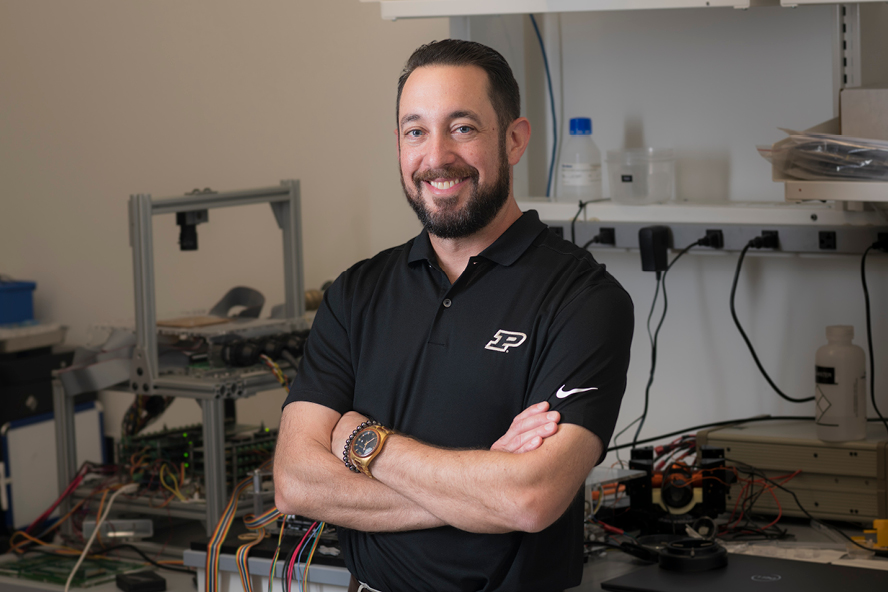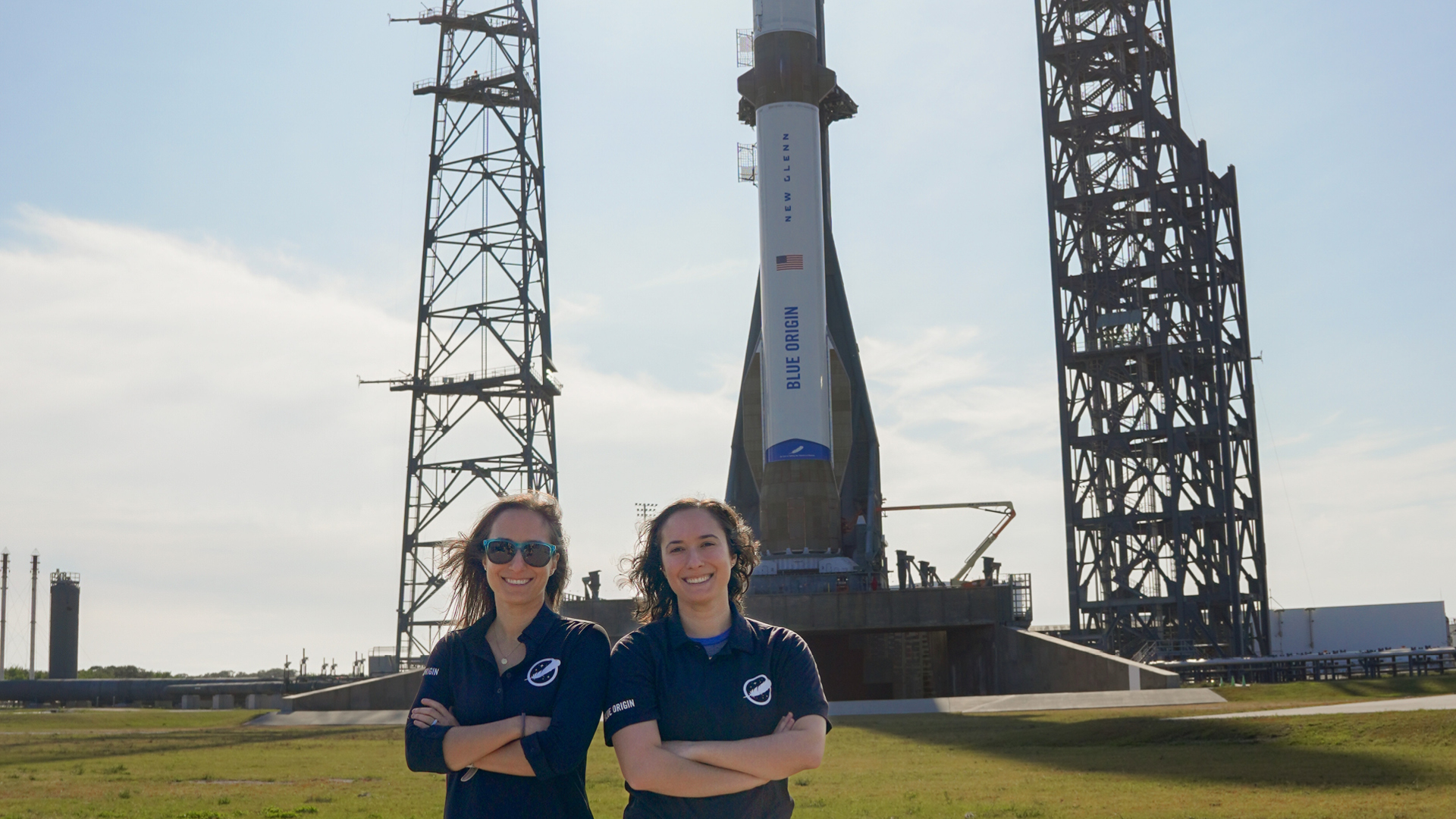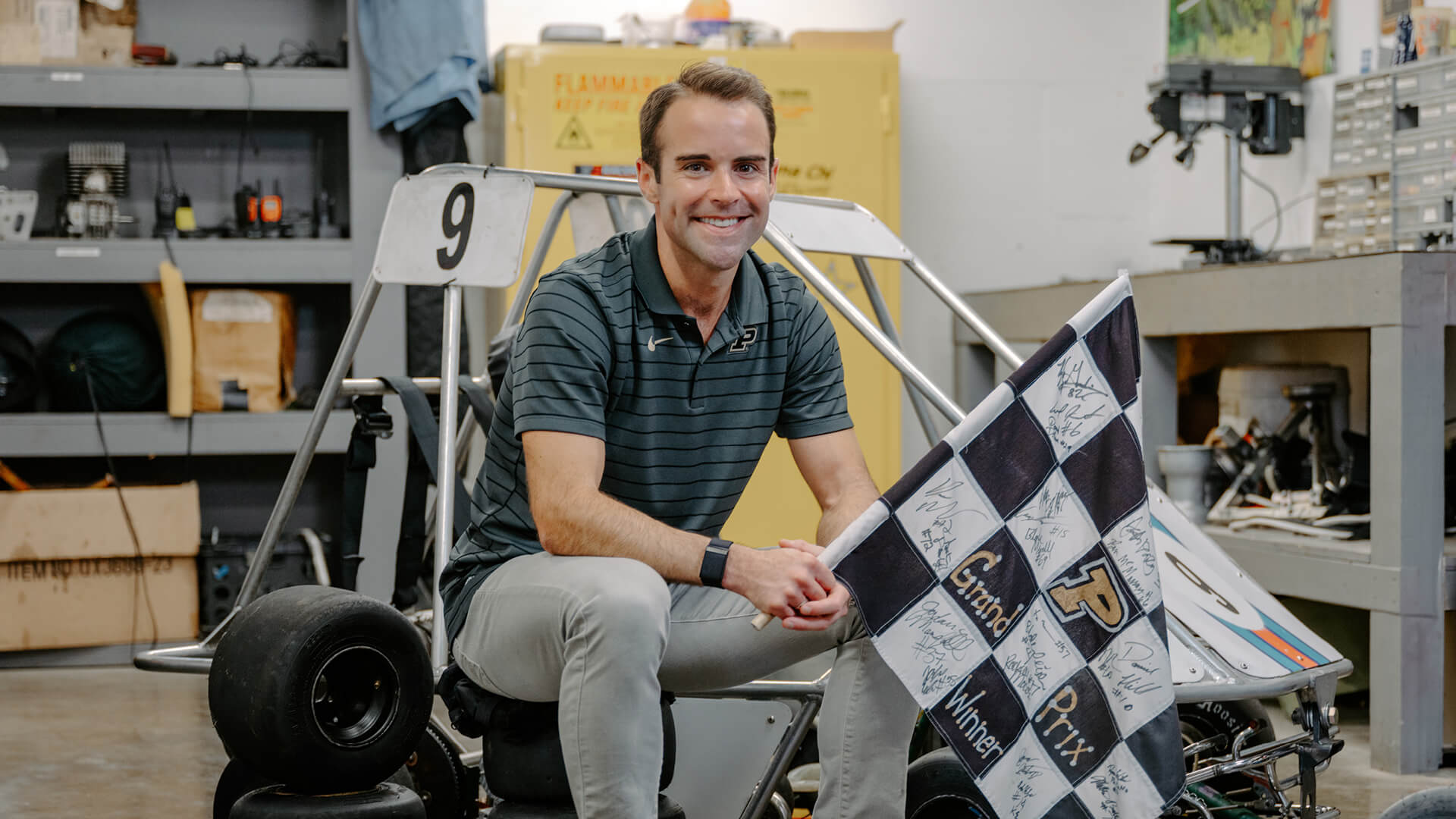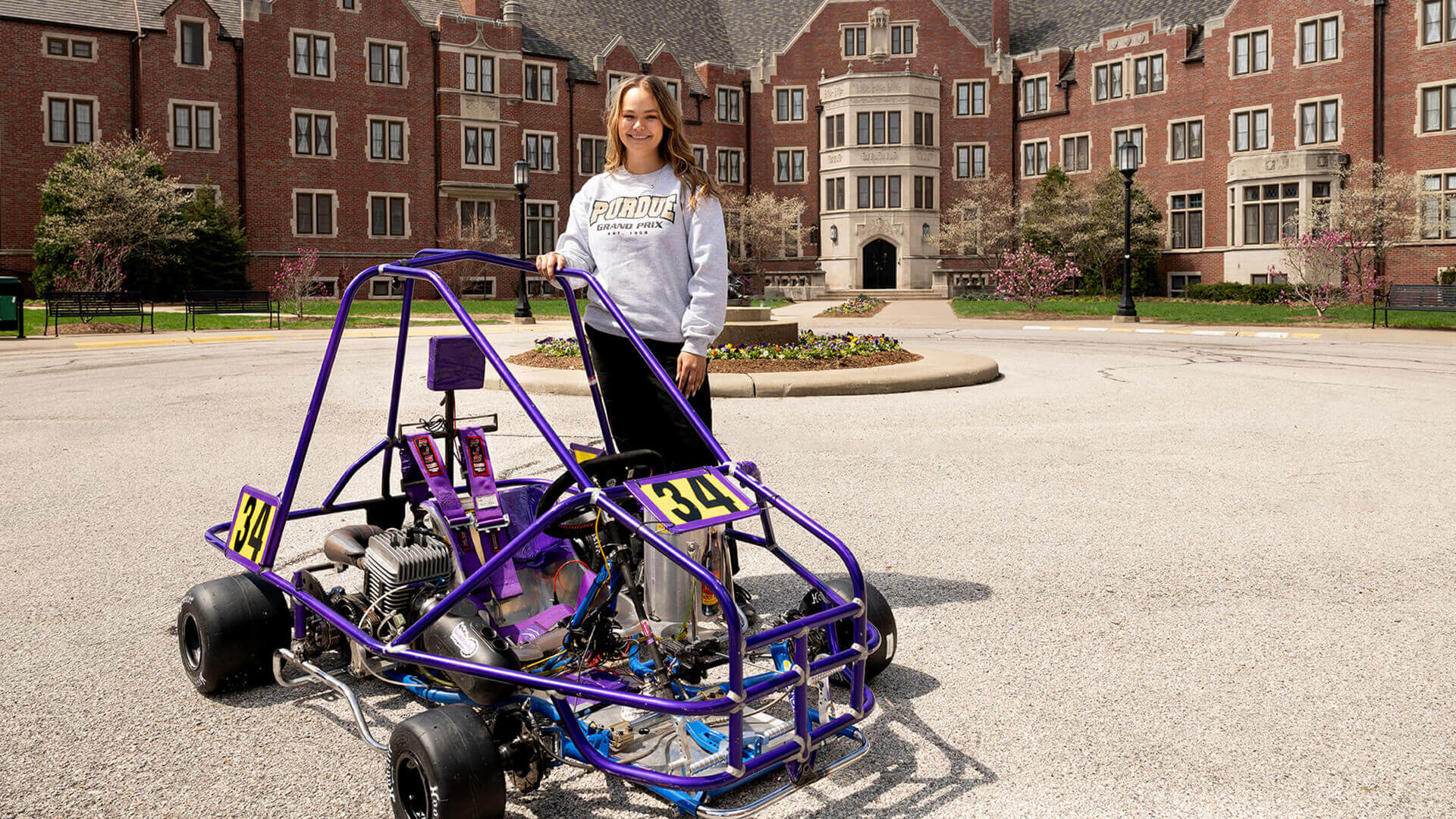The world’s smallest drum
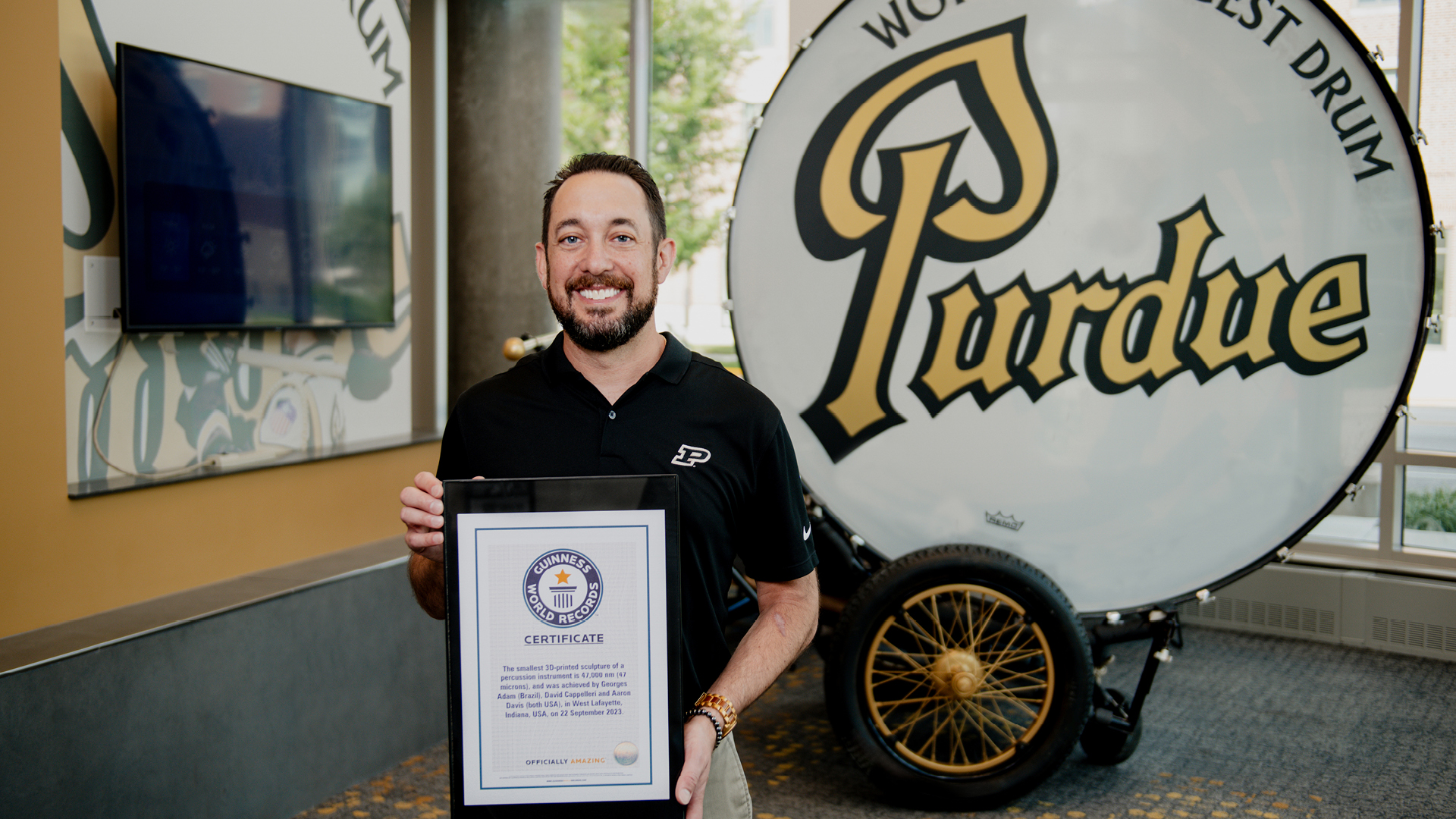
Drumroll, please: Guinness World Records recognized Dave Cappelleri, professor of mechanical engineering and assistant vice president for research innovation, along with his team, for their achievement. (Purdue University photo/Greta Bell)
New 3D printing technology is expanding horizons for microrobotics research on Purdue’s campus
Boilermakers everywhere already know that Purdue is home of the World’s Largest Drum.
But have you heard about the world’s smallest drum? It’s probably not going to get rolled out onto the field at Ross-Ade Stadium for any football games. Even if it were, you wouldn’t be able to see it.
That’s because small means small — about the width of a human hair.
For such a tiny object, it has received attention on a grand scale — it was recently recognized by Guinness World Records as the “smallest 3D-printed sculpture of a percussion instrument.” The team behind its creation received a celebratory certificate.
Dave Cappelleri, professor of mechanical engineering and assistant vice president for research innovation, came up with the idea for the world’s smallest drum to test out the Nanoscribe Photonic Professional GT2 3D printer, which streamlines the production of microscopic materials while pioneering new potential applications in medical treatments. Housed at Birck Nanotechnology Center in Discovery Park District at Purdue, the printer is the first of its kind in operation in Indiana and was acquired with a financial award from the US National Science Foundation.
Alongside Georges Adam (PhD mechanical engineering ’22), a postdoctoral researcher in microrobotics, they also printed microscopic replicas of other Purdue landmarks: the Class of 1939 Water Sculpture (commonly known as the Engineering Fountain), the Unfinished Block P sculpture — and Purdue’s official mascot, the Boilermaker Special.
“Everyone knows what the World’s Largest Drum looks like. People know what the Boilermaker Special looks like. So now we can tell them, this is the same thing — but less than a human hair in diameter. It’s a good visual,” Cappelleri says.
With their Purdue-themed test run complete, the printer is revolutionizing how Purdue microrobotics researchers engage with the field and vastly expanding the potential benefits of mobile microbots. Asked to define the term, Cappelleri explains that a mobile microrobot is an untethered device, less than a millimeter in size, that can be controlled wirelessly.
“We can streamline the manufacturing to make things even smaller, with more detail — and faster,” Adam explains. “So instead of taking about a week to make robots, now I can do them in a few hours.”
